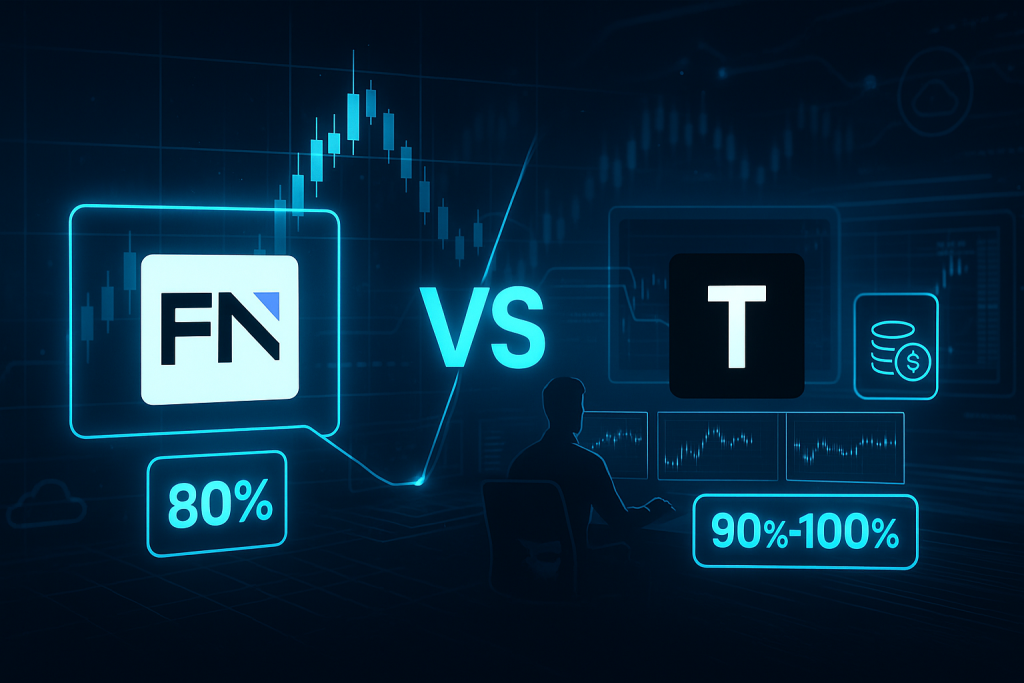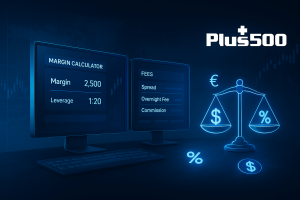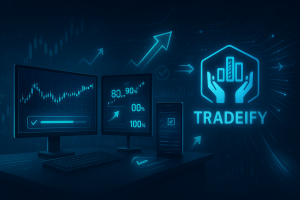Introduction
In the fast-paced world of futures trading, choosing the right prop firm can significantly impact a trader’s earning potential and long-term success. With numerous firms vying for attention, FundedNext and Topstep stand out as two of the most talked-about platforms. But how do they actually compare—especially when it comes to what matters most: profit splits, payout schedules, account rules, trading platforms, and fees?
For active futures traders, maximizing profit isn’t just about making the right trades—it’s also about selecting a firm that gives you the best structure to succeed, whether that’s higher profit retention, faster access to payouts, or user-friendly evaluation rules. And beyond headline percentages, things like drawdown resets, platform reliability, and fee transparency often make the real difference.
Both FundedNext and Topstep claim to offer trader-friendly funding models—but their approaches are very different. FundedNext leans into flexibility, performance-based scaling, and aggressive split upgrades. Topstep, on the other hand, emphasizes stability, rule clarity, and a generous early profit structure.
To help you decide which firm better aligns with your trading style and growth goals, here’s a quick side-by-side comparison across five key areas: account, profit, rules, platform, and fees.
| Feature | FundedNext | Topstep |
| Account | Scalable with performance | Fixed tiers, less flexible |
| Profit | 80–95% split, first 3 withdrawals full share | 100% first $10k, then 90% |
| Rules | No time limit, strict breach rules | Set cycles, 5‑day rule per payout |
| Platforms | Tradovate, NinjaTrader, TradingView | TopstepX (primary), NinjaTrader, Quantower, Tradovate, TradingView |
| Fees | Monthly fee + add‑ons | Flat fee, no extras |
Let’s explore each aspect in more depth.
Profit Split: What You Truly Earn
When you see “you keep 80%” or “up to 95%” in a prop firm’s marketing, it’s easy to take it at face value. But in real use, the effective split you earn depends on how the firm handles evaluation phases, upgrades, and conditions around withdrawals.
FundedNext operates with a tiered structure. During its evaluation or challenge stage, traders often receive about 15% of profits as their reward. Once the account is funded, the base split tends to be around 80% to the trader. However, FundedNext offers upgrade paths: consistent performance, scaling, or add-ons can boost your split toward 90% or even 95%. These upgrades reward high-performing traders but come with rules you must carefully navigate.
Topstep’s structure is more transparent and fixed. You receive 100% of your profits up to $10,000 (accumulated across all your accounts), and once you exceed that threshold, subsequent payouts use a 90/10 split in your favor. That means if your trading profits are modest or mid‑range, you may benefit strongly from the full split early on.
In practice, then, Topstep gives an early advantage to smaller traders, while FundedNext offers more upside for those who scale successfully.
Here’s a comparative table summarizing the profit split behavior:
| Feature | FundedNext | Topstep |
| Evaluation / challenge split | ~15% | N/A (no payouts in evaluation) |
| Base funded split | ~80% | 100% on first $10,000 |
| Higher tier / upgrade split | Up to 90–95% | Always 90% after $10,000 |
| Split flexibility | Can upgrade based on performance | Fixed once you cross threshold |
Withdrawal & Payout Mechanics
Even with a great split, your actual gains depend heavily on how often and easily you can withdraw your profits.
With FundedNext, you can request your first Performance Reward 21 days after starting trading, and further rewards every 14 days thereafter in many plans. This schedule gives you more flexibility than firms that force long waiting periods. In some of FundedNext’s futures / legacy models, after passing the challenge, you may withdraw 50% of accumulated profit after each block of 5 benchmark days, and once you complete 30 benchmark days, you may withdraw 100% of your accumulated gains. But note: once you execute your first withdrawal, your drawdown buffer resets to the starting balance, and withdrawing your full reward in one go may trigger a “hard breach” that ends your funding. Also, FundedNext processes payouts within 24 hours in many cases.
Topstep, on the other hand, requires you to accumulate 5 winning trading days (with minimum profit per day) before you can request a payout—and you may only withdraw up to 50% of your account balance in a given request (or a fixed cap, depending on plan). Once you’ve had 30 non‑consecutive winning days, you unlock daily payouts and the ability to withdraw your full account balance (though doing so typically terminates the funding). The minimum withdrawal is $125, and payouts usually arrive in 1–3 business days. After each payout, Topstep resets your maximum loss limit (so your remaining balance becomes what you must defend).
Here’s how the withdrawal mechanisms compare:
| Feature | FundedNext | Topstep |
| First withdrawal timing | After 21 days | After 5 winning days |
| Cycles / repeat withdrawals | Every 14 days allowable | Must re‑qualify 5 winning days after each payout |
| Withdrawal cap per request | Up to 50% (pre 30 benchmark days), 100% later | Up to 50% (or fixed cap), full access after 30 winning days |
| Processing time | ~24 hours in many cases | 1–3 business days |
| Reset / breach logic on full withdrawal | First withdrawal resets buffer; withdrawing full reward may cause hard breach | Payout resets max loss limit to zero (must protect remaining balance) |
Risk Rules, Drawdowns & Hidden Constraints
Even the best split or payout terms lose value if a rule violation wipes out your account or disqualifies you from rewards.
In FundedNext, withdrawals have lasting consequences. Executing your first withdrawal resets your allowed drawdown buffer back to the starting balance, reducing your risk cushion relative to gains. Importantly, if you withdraw 100% of your Performance Reward in one go, this can trigger a hard breach, shutting down your account. Furthermore, trade rules—such as daily loss limits, instrument restrictions, or disallowed trades around news—are enforced strictly and may vary by plan.
In Topstep’s system, any violation—exceeding drawdown, daily loss breach, rule infractions—can lead to account termination. But one advantage: Topstep calculates maximum loss (drawdown) based on end-of-day balance, meaning it is more forgiving of intraday swings (i.e. unrealized losses during the session) compared to firms that use continuous mark-to-market drawdown metrics. After a payout, your loss buffer is reset to the remaining balance, making your margin for error slimmer moving forward.
Here is a comparison of risk / constraint mechanics:
| Constraint | FundedNext | Topstep |
| Drawdown reset after first withdrawal | Yes, resets to starting balance | Yes, resets to balance post payout |
| Breach on full withdrawal | Possible “hard breach” | Not exactly same, but full withdrawal terminates account |
| Drawdown calculation method | Likely stricter continuous rules (varies by plan) | Based on end-of-day balance (more forgiving intraday) |
| Rule violation consequence | Account closure or loss of reward eligibility | Account closure or suspension of payouts |
TradingVPS: Powering Faster Execution and Stability for Futures Traders
In the world of futures prop trading, milliseconds can decide whether you capture or miss a profitable trade. Reliable execution and zero downtime aren’t luxuries — they’re essentials. That’s where TradingVPS delivers a decisive edge.
Built specifically for professional and prop firm traders, TradingVPS offers ultra-low latency hosting (0–1 ms) to major futures broker servers like CME, NinjaTrader, and Tradovate. Designed on Windows Server 2022 with high-frequency-optimized CPUs and NVMe SSD storage, it ensures lightning-fast order routing, even during peak volatility or news events.
Whether you’re running multiple FundedNext or Topstep accounts simultaneously, or executing algorithmic and automated strategies, TradingVPS provides dedicated resources — eliminating the bottlenecks and lag often experienced on shared hosting solutions. This means every order, strategy, and chart loads instantly and performs consistently.
Plans are built for scalability: from the Starter plan for individual traders to Dedicated Trading Servers capable of handling complex, multi-account or multi-platform workloads. All plans include DDoS protection, global accessibility, and multi-monitor support (up to six displays) — ideal for multi-chart analysis or high-frequency setups.
TradingVPS also guarantees 99.99% uptime, so your positions and expert advisors stay connected 24/7 — even if your local system disconnects. With average speeds under a millisecond to leading exchanges, you’ll experience noticeably faster trade execution, tighter fills, and fewer missed entries during volatile market conditions.
Key Benefits:
- Ultra-low latency (0–1 ms) to major futures brokers and prop firm servers
- Dedicated resources — no shared CPU or bandwidth throttling
- 100% uptime SLA with auto-failover protection and Secure DDoS protection
- Supports NinjaTrader, Tradovate, and major futures platforms
- Multi-monitor setups for advanced charting and risk control
- Global access from desktop or mobile with encrypted remote login
Whether you’re scaling your FundedNext account, managing consistent payouts with Topstep, or fine-tuning automated trading systems, TradingVPS provides the rock-solid infrastructure you need to execute faster, trade more securely, and perform with consistent precision across every session.
Conclusion
Choosing between FundedNext and Topstep is not just a matter of which one offers the higher headline split—but about which set of rules, mechanics, and infrastructure align with your trading style, consistency, and growth path.
Topstep appeals to many traders because of its clean and stable structure: you keep 100% of your first $10,000, followed by a 90/10 split, and though withdrawals require you to accumulate five winning days and follow payout cycles, the rules are well documented and long tested. The use of end-of-day drawdown calculation gives some flexibility for intraday volatility, and the reset rules are clear after each payout.
FundedNext, on the other hand, offers more aggressive upside for those who can perform consistently. By starting with a modest reward share during evaluation and escalating to 80%, and then permitting upgrades toward 90–95%, it lets high-performing traders capture more. Withdrawal cycles (first after 21 days, then every 14 days) tend to be more frequent, and the minimums lower. But with greater flexibility comes more complexity: rules around resets, first withdrawal effects, and hard breaches on full withdrawal demand discipline.
If your trading is steady and your aim is consistent profit with predictable cashouts, Topstep may feel safer and more straightforward. If you’re aggressively scaling your P&L, willing to carefully manage risk, and want to maximize every edge, FundedNext may offer more long-term upside—provided you don’t trip its hidden rules. Always keep in mind that your trade execution environment—the latency, slippage, reliability—will often cost or gain you more than small differences in split. Use a high-performing VPS, monitor slippage, and choose the firm whose mechanics align best with your strategy and comfort with rules.
FAQ
FundedNext offers challenge/evaluation plans (e.g. Stellar, Stellar Lite) and funded accounts. After passing the challenge and verification, traders are upgraded to a funded account.
Topstep uses the “Trading Combine” evaluation followed by Express or Live Funded Accounts. Once the Combine is passed, you move into funded accounts.
FundedNext typically gives ~80% to the trader in funded accounts, with opportunities to scale up to 90–95% via add‑ons or promotional plans.
Topstep gives 100% of profits up to $10,000, then subsequent profits are split 90/10 (90% to trader) afterward.
You can hold multiple FundedNext accounts, but there is an aggregated funding cap (e.g. $300,000) across all funded accounts.
In FundedNext, rule violations usually lead to account closure, loss of reward eligibility, or blacklisting depending on severity.
In Topstep, if you break a rule (e.g. exceed maximum loss) in Express or Live accounts, the account is closed. There is a “Back2Funded” option (in new dashboard) allowing reactivation up to 2 times for Express accounts.




